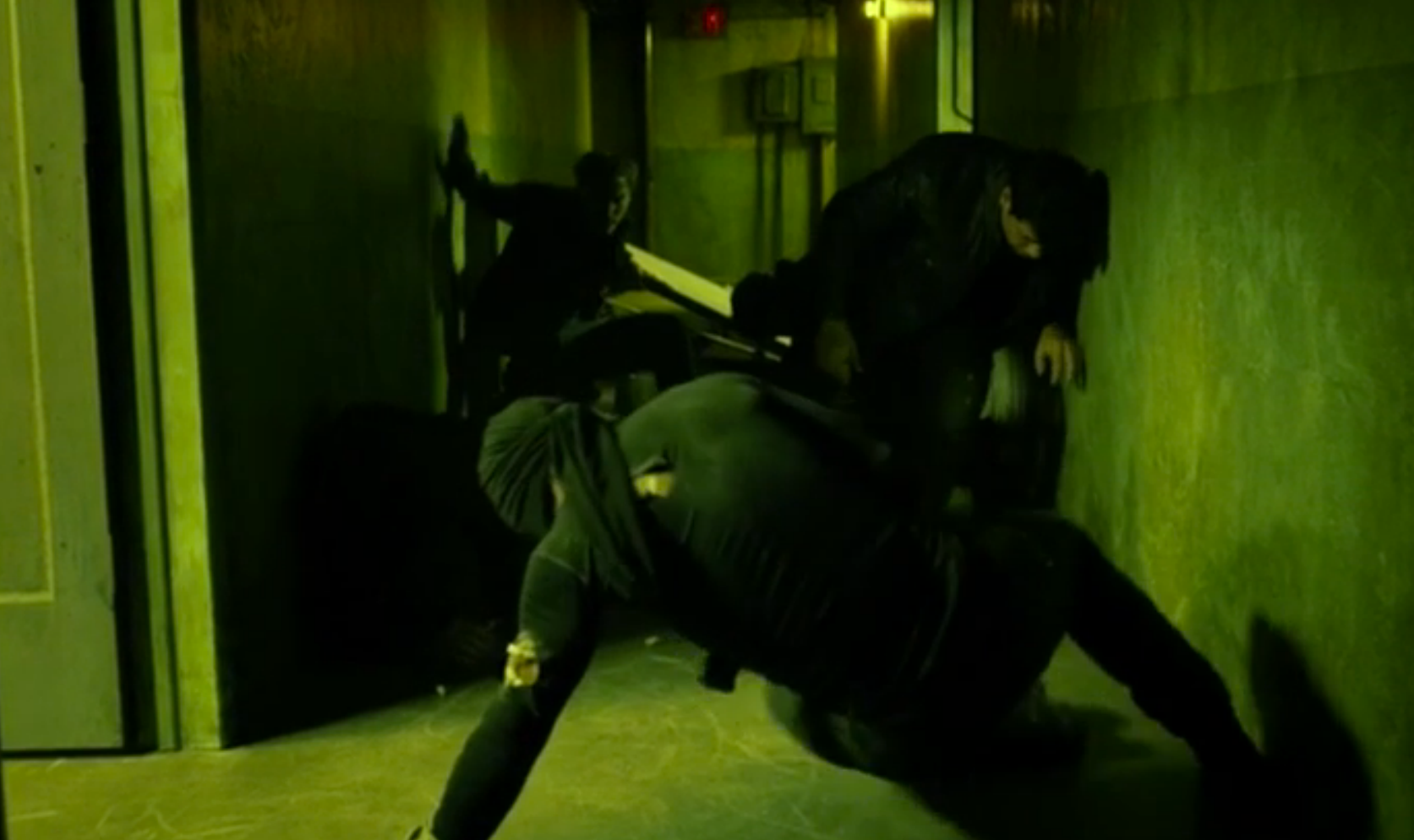This article originally appeared in Vulture.
The final scene of Daredevil’s second episode ends with a brutal, five-and-a-half minute single take that encapsulates much of the show’s ambition: dark, painfully realistic, and unrelenting in its tone. Matt Murdock (Charlie Cox), clad in all black with rope wrapped around his knuckles, arrives at a Russian hideout where they’re holding a trafficking victim captive, a little boy. In the fight scene that unfolds, the camera slowly moves back and forth along the hallway like a disinterested observer as Murdock lays the beatdown on a swarm of Russian mobsters—a balletic choreography of blows, punishing in its sound design.
“He’s tired, he’s beat, but he’s got a will that just keeps going, regardless of what pain he’s in,” said Philip Silvera, the fight and stunt coordinator for the series. You might recognize Silvera’s work in Thor: The Dark World, The Dark Knight Rises, and the leaked Deadpool footage that went viral last year. He modeled Daredevil’s fighting style so that it was like that of a seasoned MMA fighter, mixing Matt’s lineage as the son of Battlin’ Jack Murdock, along with his martial arts training by his mentor, Stick. “He’s learned everything from wing chun to trapping to silat to kali,” said Silvera. “We wanted to put all those things into the stew and create his own unique style and give him his own flavor.”
And in case you’re wondering, yes, that was “absolutely” a single take. “Phil Abraham [the director] really wanted the purity of the one shot, and in doing that, we found a great place for the show,” he said. “We were able to find this very real world weight for these characters. This, I’m very tired, but I’m pushing through this pain. I can take punishment, and I can give it back.”
The scene came together over two days. When it came time to shoot, they spent the first half of the day blocking the choreography with cinematographer Matt Lloyd to make sure the camera movements and the action were in full synchronization. “The second half of the day was just going for it full tilt,” said Silvera. “In that particular fight, we had over 105 fight beats. Normally, on any given cut on a film, you’ll get three or four beats before you see a cut. We had guys coming at him from multiple angles at the same time—never just one guy at a time.” They finally found the perfect shot around the tenth or twelfth take.” While Silvera didn’t share how much of the scene Cox did compared to the stunt doubles, he said, “Those guys would kill themselves each and every take—from Charlie to the stunt performers to the stunt double. They put their all into that scene, and it came out beautiful.”
The scene drew from a number of influences, including the infamous hallway fight scene from Oldboy. “That scene is definitely influenced by Oldboy,” said Silvera. “But we brought it to somewhere different.” The point of the fight, though, is to bring together plot, character, and tone. “Every stunt we do, there has to be a reason for it, an emotional content, and a logic to why we’re doing certain things,” said Silvera. “That’s what you see in his character as he’s fighting: As tired as he is, he won’t give up, he won’t go down. He’s like Rocky in that last round.”
See also: Daredevil Recap: Saints and Martyrs
